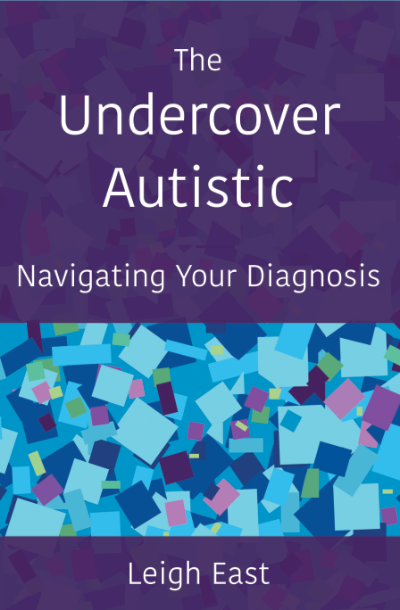The Undercover Autistic
Whether you self-identify or have a formal diagnosis of Autism, this new knowledge can lead to wonderful feelings of euphoria and relief. It can also bring anger and resentment and create whole new set of challenges.
Often totally unprepared for such wide-ranging reactions, without timely and appropriate support this phase can feel incredibly hard and isolating.
As we work through this phase there is a lot to investigate. But without help this can be difficult to do in a way which does not undermine our self-esteem and confidence. How long this phase lasts is different for each person, for some it can be just months, for others years. And the scale of disorientation will vary too, but some degree of turmoil is very common.
This book describes one such experience and includes many of the useful techniques and concepts which helped the author move forward from the downward spiral she found herself in following diagnosis.
The book is broken down into 4 different sections. How you use the book depends on what you want to focus on first.
If you’re imminently starting the assessment process, you may want to first turn to Appendices A & B to go through the things you can do to help get the most out of your diagnostic experience, before delving into other chapters.
One of the things people often report as being incredibly valuable, are the stories and experiences of fellow Autistics. With this in mind, one of the appendices reveals a little of the author’s experience of what it has been like to be an Undercover Autistic child, young person, and adult.
Part One – Some basics
Chapters 1-3 cover some fundamentals about Autism which the author believes are useful to have a handle on before getting too far into the diagnostic experience.
Part Two – My adult diagnosis
Chapters 4-9 discuss the author’s experience of adult diagnosis – the four years from diagnosis to personal acceptance.
Part Three – Things I wish I had known
Chapters 10-21 describe many of the concepts the author believes could have made a big difference to her experience had she been helped to understand them early on.
Part Four – Things I do differently
Chapters 22-28 detail things the author does differently now. These techniques and approaches have fundamentally altered her outlook on life and significantly improved her ability to cope in a predominantly Neurotypical world.

